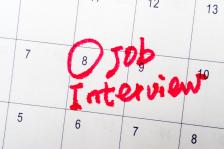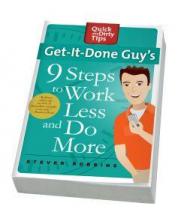How to Write a Great Resume (Part 1)
Simply having a resume isn’t enough. You need a resume that does its job, if you want to land your job!

I help people live extraordinary lives! And your job is a big part of your life. Clients have asked me to review their resume and tell them what I think. Usually it’s “Arrrrrgggghhhhh! You didn’t actually send this out, did you? Like, to a recruiter? Or a headhunter? Or heaven forbid, to Facebook? After all, people do check out their prospective boyfriends, girlfriends, husbands, wives, spousal equivalents, and polyamorous family units on Facebook before they decide to take the plunge.”
Some people throw together a resume quickly, just to get it over with. They save effort in their job hunt, but end up in a job they hate. For years. Wouldn’t it be smarter to put in more time and effort up front, to get a job you love? Of course it would. The question was rhetorical. If you’re going to do a resume, do it right.
Sponsor: Squarespace, the all-in-one platform that makes it fast and easy to create your own professional website, e-commerce site, or online portfolio. For a free trial and 10% off, go to squarespace getitdone and use offer code getitdone12.
Resumes Don’t Get You Hired
No one was ever hired on the strength of a resume, but plenty of people were cruelly discarded like Paris Hilton’s last-season must-have fashion accessories, and never called in because their resume didn’t do its job. Resumes don’t get you hired; if they do anything, they disqualify you from a job.
Your resume’s only job is to distinguish you from the other candidates in a way that gets them tossed in the rubbish heap, and gets you called in for an interview.
Understand Your Value

Research before applying for a job. What challenges is the company facing in the marketplace? Who are their competitors? What are the trends? Research this! Then decide how you can help them.
If you’re a salesperson, can you help them increase sales? Your message is, “Hi, I’m Loren. Hire me and I’ll boost the sales of your XYZ unit by 50%.” (And we all need more XYZ.) Are you a customer service rep? Your message is, “I’ll help get customer problems solved in record time. You’ll have happier customers, quicker response time, and more personalized attention with me on board.” Are you an engineer? Your message might be, “I can trim development time for a new feature by 10% and release it with fewer bugs.”
When applying for a job, you’re selling the value you bring, not your past experience.
When applying for a job, you’re selling the value you bring, not your past experience. Your past experience is only there to use as evidence that you can bring that value.
Every time you speak with a hiring manager or potential boss, either in casual small talk or when it’s your turn to ask questions, ask about the challenges they’re facing, both as a company and personally. Then briefly brainstorm how you might be able to help them solve their problems. The whole time, you’ll be communicating how your value solves their problems.
Make Your Resume Tell a Story
The benefits you provide each company will be different, and so shall be your resume. Yes, I’m telling you to customize your resume for every company. Your resume must communicate your value to this particular employer. It must show what you’ll do for them by highlighting the relevant parts of your past experience that show your awesomeness.
If your story is “I can help find new markets,” the job description should feature anything you’ve done that’s related to finding new markets. The job responsibilities that don’t tell stories about finding new markets should be relegated to tiny bullet points in obscure fonts, if they’re included at all.
Sometimes, all your previous experience is in painting garden gnomes. But you want a job in management. The person reviewing your resume will not understand how your past experience is relevant. I don’t even understand it, and I made up the example. When applying for a job you’ve never done before, bring out stories about your basic, transferrable skills. Also bring out the storyline that you can be dropped into a new situation, learn quickly, and produce results. Don’t bother with the bullet point “Arranged gnomes tastefully in garden.” Do include “Painted 500 gnomes at mil-spec quality levels after just three days of self-directed learning.”
Avoid LinkedIn

My LinkedIn profile is a high-level professional description, with keywords added so I can be found via search. I include broad summaries of my jobs. If the broad description makes someone decide I’m not right for them, we’re so mismatched that it isn’t even worth talking. Otherwise, the goal is to intrigue just enough so people reach out to me.
Don’t Send Your Resume, Make Them Beg For It
Even though you’ve customized your resume, send it along as late in the process as possible. Certainly avoid cold-calling at all costs. Unsolicited resumes go straight to human resources, whose job it is—you guessed it—to reject as many as possible.
The moment you send in your resume, you give away control of your job hunt. You can’t control the impression you make. You can’t answer questions or explain that unfortunate mention of the job you had dressing up as a 5-foot-tall purple hot dog (forgot to customize that one, didn’t you?).
Instead of sending in the resume blindly, put on your Sherlock Holmes hat and see if you can find out who the hiring manager is. Get introduced to them directly. This is where LinkedIn can help to find an introduction. Talk to friends, relatives, and anyone you meet who works for or has done business with that company. Learn their issues and establish initial rapport, so they want you to send in your resume. Then, and only then, send it in.

I’m Stever Robbins. I help high-achievers create extraordinary lives, careers, and businesses. If you want to know more, visit Stever Robbins .
Work Less, Do More, and have a Great Life!






